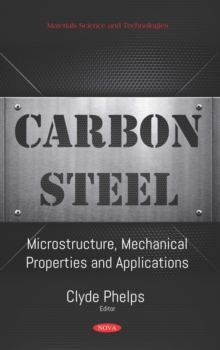
Layer-By-Layer Deposition: Development and Applications PDF
Edited by Eve A. Milne
Part of the Materials Science and Technologies series
Description
Layer-by-layer self-assembly is the most widely used strategy for the production of functional surfaces with tailored structures and chemical, biological, optical and electrical properties.
Layer-by-layer approaches allow for the loading of bioactive molecules for tissue scaffolds, cardiovascular devices, implants, wound healing dressing, bone grafts, biosensors, drug delivery, and release systems.
This book examines the physico-chemical bases underlying the fabrication of materials by the layer-by-layer method.
Understanding the forces involved in the control of the assembly process is essential for the fabrication of materials with controlled properties, and structures.
Following this, the main principles and latest strategies of functionalized films, diamond core-shell structures, and graphene/graphene oxide nanocomposites by layer-by-layer self-assembly technology are extensively reviewed in detail, and these composites have been applied in the fields of biology, catalysis, and dye degradation.
The authors study the layer-by-layer growth of quasiperiodic structures that are mathematical models of quasicrystals.
This study is based on the concept of model sets proposed by Moody and generalizing the well-known "cut-and-project" method.
This compilation also reviews the current state of the art uses of the layer-by-layer strategy for providing natural and synthetic textile materials with flame retardant properties, reviewing and discussing the current advances.
The penultimate study focuses on how nisin peptides can be entrapped and released, creating an antibacterial food-contacting textile membrane.
Biocatalytic membranes can be fabricated using entrapped enzymes.
Lastly, the different issues of multilayer emulsions with flaxseed and chia seed oil as omega-3 sources will be discussed, including their formation, composition, stability, characterization, and application.
Information
-
Download - Immediately Available
- Format:PDF
- Pages:300 pages
- Publisher:Nova Science Publishers, Inc.
- Publication Date:10/11/2020
- Category:
- ISBN:9781536170870
Information
-
Download - Immediately Available
- Format:PDF
- Pages:300 pages
- Publisher:Nova Science Publishers, Inc.
- Publication Date:10/11/2020
- Category:
- ISBN:9781536170870










